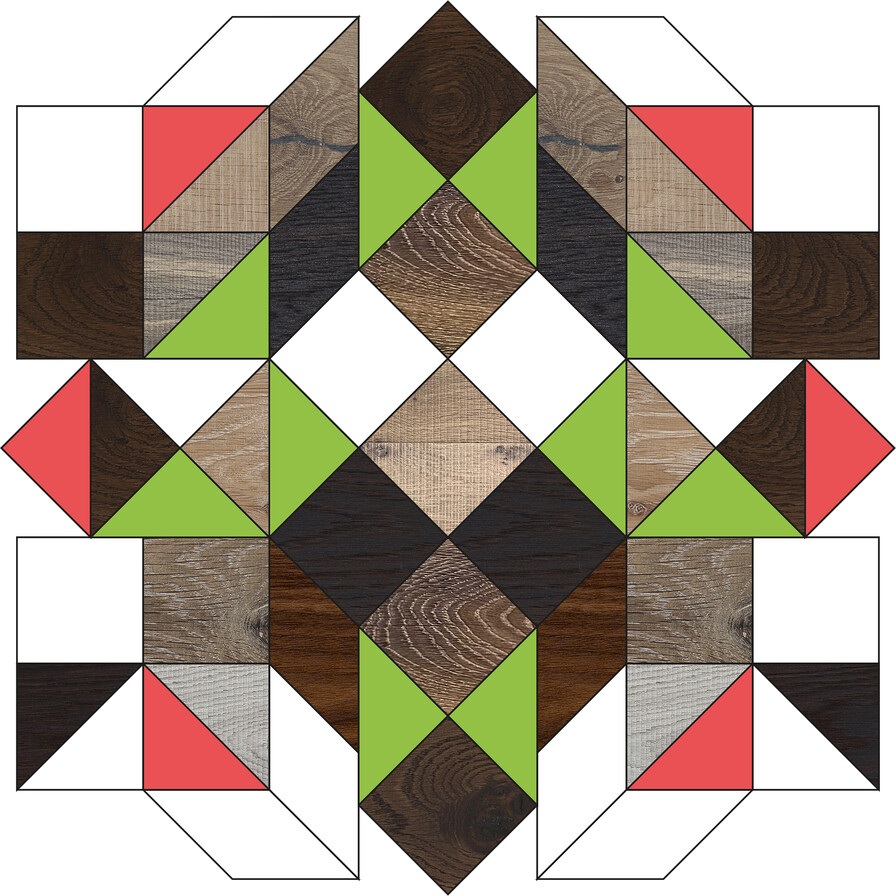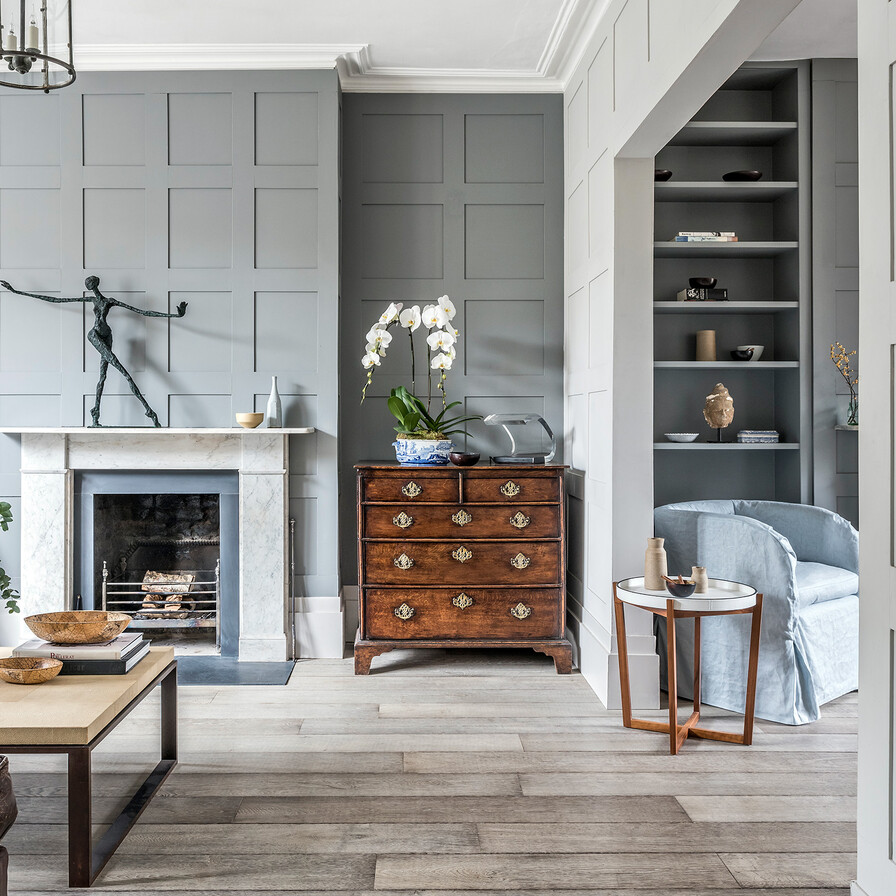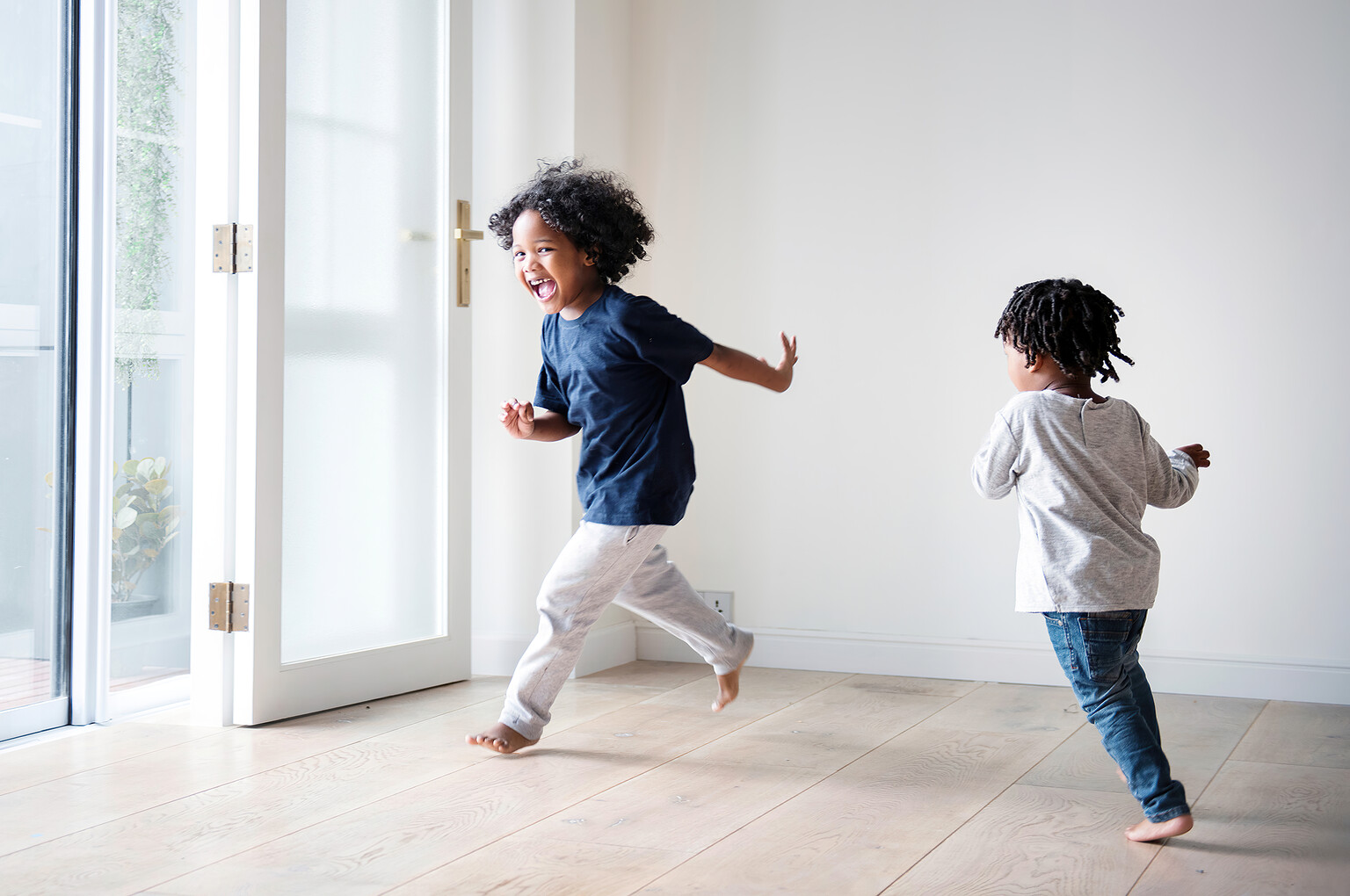
Maintenance & After Care
As a living material, timber breathes and responds to the environment around it. Light, temperature, humidity and daily usage will all eventually have an effect on the timber, such as mellowing of the surface colour. However, proper care and maintenance will keep your floor nourished and protected.
Basic recommendations
The level of maintenance required will depend on the amount of traffic. Simple regular cleaning with a soft broom or vacuum cleaner will remove dust and dirt particles and reduce abrasion. Oiled floors should be damp-mopped at least every fortnight with a mix of water and natural soap. Areas of high traffic such as kitchens and hallways should be mopped once a week.
- Consider using a doormat at the entrance to stop dirt being brought into the building
- Always use the brush suction unit on your vacuum cleaner, or use a soft broom
- To clean the floor, only use the recommended soap and maintenance products.
- Avoid excessive use of water on the floor and do not use steam cleaners.
- Remove spillage of liquids and foods as soon as possible.
- Plant pots should not be placed in direct contact with wooden floors.
- Keep the relative humidity between 40% and 65%. This will prevent shrinkage of the timber.
- With heated floors, ensure that the surface temperature of the wood doesn’t exceed 27°C.
- Re-oil your floor on a regular basis (see information on re-oiling).
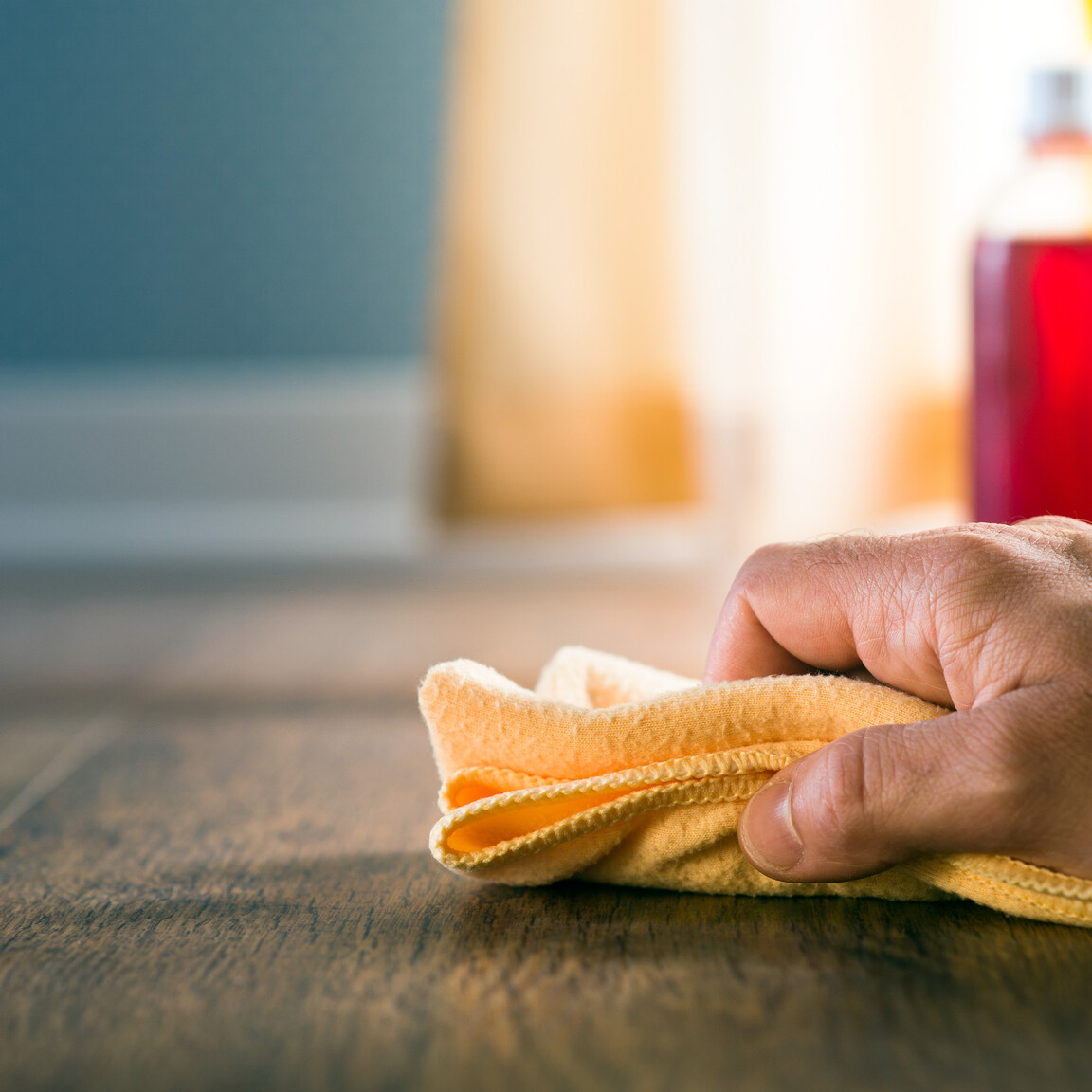
Application of topcoat
There are a number of processes involved in the production of each of our colour tones – fumed (single, double or triple), core-smoked, burnt, colour oiled, lye treated. Additionally, the finish of the board can be smooth (planed) or textured (brushed, band-sawn, ripp-sawn).
However, it is important that all those involved in fitting your floor understand that the colour and finish of each board doesn’t penetrate the entire depth. Paint spillages or other stains should never be cleaned using white spirit or by scrubbing or sanding, as this may remove the colour and texture.
- Once the floor has been installed, vacuum the floor thoroughly and carefully remove the protective covering.
- If the floor is dirty, it can either be lightly buffed with a bona scrad pad or damp-mopped with a solution of 100ml of WOCA Wood Cleaner mixed with 5L of lukewarm water.
- Carefully stick low-tack masking tape around the skirting board and delicate structures such as kitchen cabinets.
- Apply the recommended oil as per the manufacturer’s instructions. To aid drying times, ensure the room has a minimum temperature of 18°C.
- The oil is usually applied by roller/ brush or with a buffing machine/ white pad.
- Leave the oil to dry for at least 24 hours before moving furniture back into place. Most oils will take several days to cure completely, so treat the floor with extra care for the first few days.
- When moving furniture back into place, this is a good opportunity to stick self-adhesive felt pads on the feet and bases of moveable furniture such as sofas, cabinets, tables, chairs etc.
- Do not re-lay floor protection or rugs for at least 4 days after applying oil. Likewise, do not clean the floor with water for a minimum of five days after oiling.
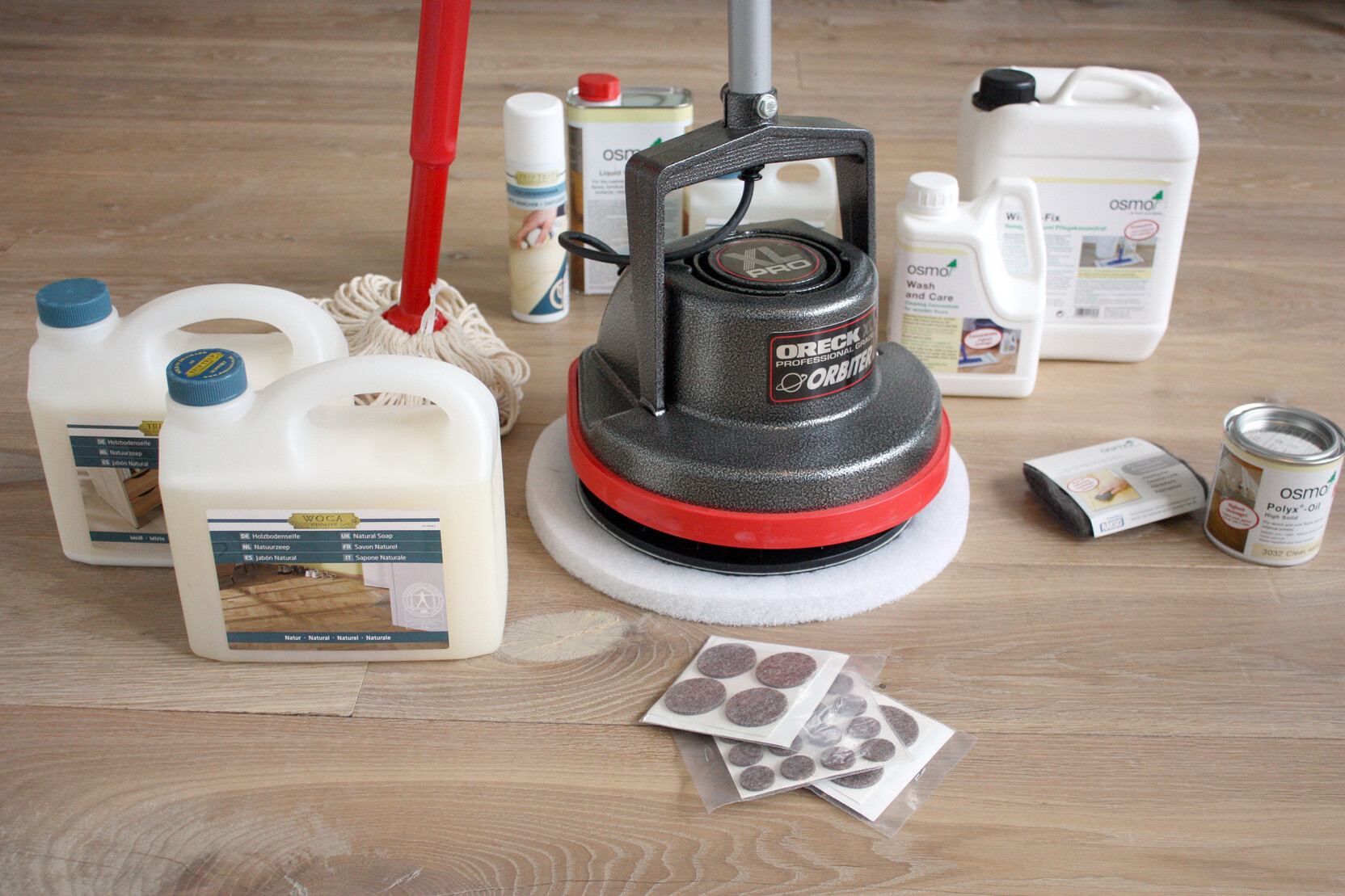

Re-oiling
Depending on the usage your floor should be re-oiled periodically. Below is a guideline but ultimately, how often you re-oil will depend on the amount of traffic and how well the floor is looked after.
- Vacuum the floor and clean with a damp mop with a solution of 100ml of WOCA Wood Cleaner mixed with 5L of lukewarm water. Leave to dry for at least three hours.
- Superficial stains such as paint spillages can be removed carefully with a blade or gently rubbed with a bona scrad pad.
- Carefully stick low-tack masking tape around the skirting board and delicate structures such as kitchen cabinets.
- Apply the recommended oil as per the manufacturer’s instructions. To aid drying times, ensure the room has a minimum temperature of 18˚C.
- The oil is usually applied by roller/ brush or with a buffing machine/ white pad.
- Leave the oil to dry for at least 24 hours before moving furniture back into place. Most oils will take several days to cure completely, so treat the floor with extra care for the first few days. Badly worn floors will benefit from two coats, in which case leave to dry for another 12 hours before moving furniture back into place.
- When moving furniture back into place, you might consider re-applying self-adhesive felt pads on the feet and bases of moveable furniture such as sofas, cabinets, tables, chairs etc.
- Do not lay floor protection such as rugs for at least 4 days after applying oil. Likewise, do not clean the floor with water for a minimum of five days after oiling.
- Please Note: Rags covered with oil should be disposed of outside in a bucket of water or sealed in a plastic bag as there is a small chance that they can self-ignite while drying.
Repairs - Stains
Some stains can be removed by cleaning and applying Tannin Spot Remover. First, apply low-tack masking tape to any skirting in the immediate proximity. Buff the affected area with a bona scrad pad. Vacuum the area clean and clean with WOCA Wood cleaner diluted in lukewarm water. Apply Tannin Spot Remover to the stain and leave to react for 20 to 30 minutes. Leave the area to dry for at least two hours and then gently re-buff with the scrad pad to remove any residue. Finally, vacuum and apply one or two coats of the recommended oil.
On smooth (sanded or planed) finishes it is possible to remove stains by light sanding. Apply low-tack masking tape to any skirting in the immediate proximity and lightly sand the affected area to remove the oil finish and expose the wood. Gently rub with sandpaper (120 grit) until the stain is removed. If the stain remains visible, apply Tannin Spot Remover. Leave for 20 to 30 minutes before giving it a final sand (120 grit sandpaper). Vacuum any residue and apply two coats of the recommended oil.
Dents and scratches
- Surface scratches can easily be removed with light buffing and re-oiling.
- Dents and deeper scratches should be filled with a coloured wax filer stick.
- If a board is severely damaged, we recommend replacing it. This should be done by an experienced tradesman. Note, it is only possible to replace boards or parquet pieces that have been fixed (nailed or fully bonded) to the subfloor.

